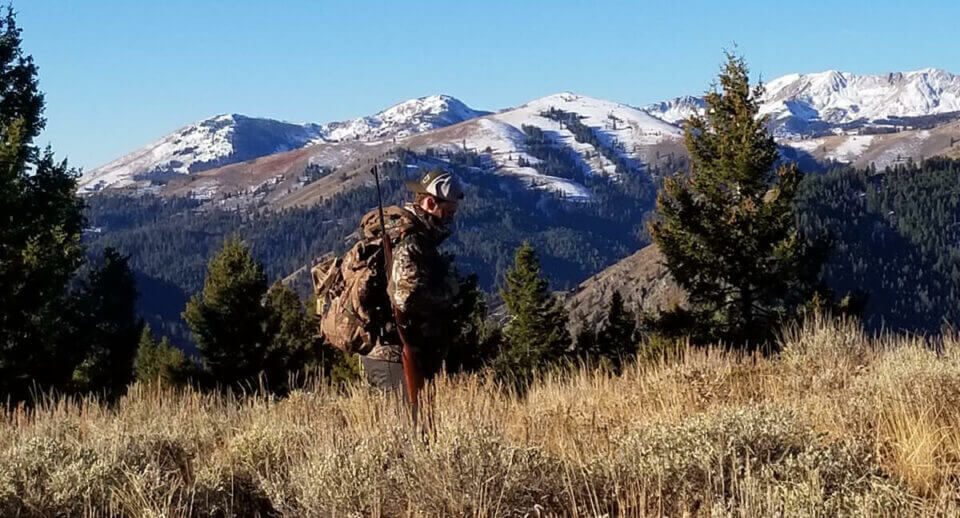
When you’re planning an elk hunting trip, you know you might be faced with any number of weather conditions. Mountain temperatures can plummet quickly, and weather systems can roll in without warning, so if you’re not prepared, your hunt can go downhill quickly. When you have to depend on your feet to bring you back home safely, choosing the best elk hunting boots is key.
Elk hunting can be rugged and challenging even if you’re hunting early in the season since most elk populations thrive in mountainous regions. Elk hunting is most popular in the western half of the U.S. throughout areas of Wyoming, Montana, Idaho, North and South Dakota, Colorado, New Mexico, Utah, Arizona, Oregon, and Washington. Wyoming even claims to have a 44.4% average hunter success rate, while Colorado sees the highest number of elk hunters, according to Backcountry Chronicles. Since elk hunting season ranges from early fall to winter, you can expect a lot of these areas to be facing cold weather conditions.
Choosing Elk Hunting Boots
When and where you plan an elk hunting trip will determine what type of boot you need. Whether you’re looking for a solid pair of bow hunting boots or a well-insulated boot to trudge through snow, Thorogood has you covered. There are a few questions you need to ask yourself, and features to look out for, when you’re trying to choose the right type of boot to last you a few seasons.
Do I Need Insulated Elk Hunting Boots?
Professional elk hunters recommend the following insulation levels to get you through elk hunting season:
- Early season – 400g of insulation
- Mid-late season – 800g-1000g of insulation
- Low or subzero temperatures – 2000g+ of insulation
Do I Need Waterproof Boots?
If you want your feet to stay happy, it’s best to look for waterproof features. Nobody enjoys trekking around with wet feet, and waterproof boots are handy outside of hunting trips because of their versatility. Wear them on rainy days, whether you’re working in the outdoors or running errands. After all, a lot of the states that offer the best elk hunting also experience long winters with rain and snow.
Does Boot Sole Matter?
Yes, and we can’t stress this enough. The footbed, midsole, and outsole are the only things separating your feet from the ground, so the quality of this part of your boot has a direct impact on your comfort and how much use you’ll get out of your boots. Thorogood’s FD Series is developed with Flex-drive construction, meaning the technology of the midsole and outsole are fatigue-fighting, provide excellent shock absorption, have an aggressive tread and superior traction. Yes, we’re bragging, but you will too when you’re showing off your new boots to your buddies.
How Tall Should My Boots Be?
How deep is the snow you’re trudging through? The typical 6” hiker style boot may not be enough protection for late season elk hunting, so we’d recommend 8” and up. That way, you can tighten your laces at the top so snow or water doesn’t get in your boots and, if you need to, you can throw on some gaiters. 8” boots also offer more ankle support, which is helpful when you’re trekking through rocky areas or up and down inclines.
Elk Hunting Boot Recommendations
For the best elk hunting boots, you need boots that are versatile and durable. With the latest technology combined with superior quality components, Thorogood boots are exactly what you want to be wearing when you might be facing adverse weather conditions.
Elk Hunting Gear
Elk hunting boots are just one of the important pieces of gear you’ll need. You’ll also need to decide whether you’ll be bow hunting vs rifle hunting. Not only are there pros and cons for hunters, but also for the animal. Rifle hunting is more popular due to its increased range, and it gives hunters the advantage of an easier and more ethical shot. Bow hunting is slightly more expensive and requires a higher physical demand and more skill, especially when you want to execute a shot effectively without inflicting too much pain on the elk. MOSSY OAK® explains more about what you need to know when deciding how to hunt elk, and we’ve gone ahead and put together a checklist of what gear you’ll need to make the most out of your hunt.
Elk Hunting Gear Checklist
The amount of gear you’ll need will depend on where you’re staying, how many days you’re camping, the terrain, and at what part of the season. Here’s what you’ll need as a general guide:
- Camping gear – Make sure you have a weather appropriate tent, a sleeping mat, sleeping bag, and whatever else you need to spend a night in the great outdoors, especially during inclement weather.
- Tools – A GPS unit, two-way radio, compass, map, headlamp, knives, nylon twine, fluorescent tape, and gloves are all useful for hunter safety.
- Cooking supplies – If your hunt is going to last a few days, you’ll need to eat while you’re out there. Bring basic utensils, plates, towels, and condiments along with whatever you’re hoping to cook in so you can enjoy a good meal after a long day on your feet.
- Gear – Don’t forget to bring your bow or rifle, but keep in mind that you may need extra ammo, a cleaning kit, covers, a scope, and binoculars. You should also have all your hunting apparel plus a couple spare pieces of clothing in case the inclement weather causes you to need a change of clothes.
While elk hunting can be an exciting and enjoyable experience, it’s important to prioritize safety and respect for nature.
